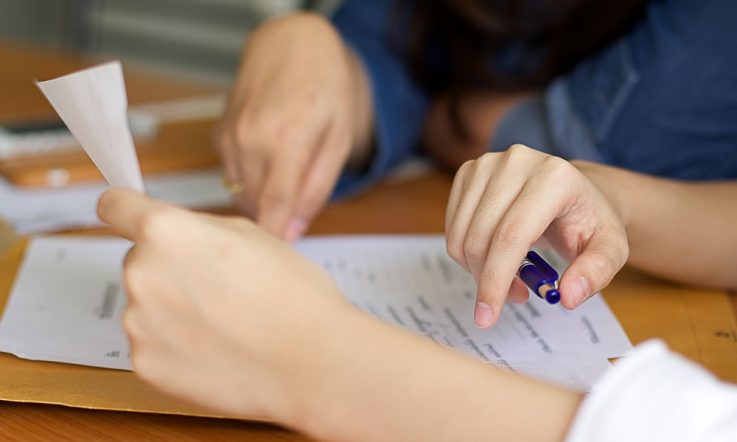We know that professional learning has a good chance of working in schools if it is ongoing, job-embedded, inquiry-based and (perhaps most importantly) collaborative (OECD, 2019). But establishing professional learning that realises these criteria is challenging. Time is finite, resources are scant, and schools are complex.
At St Laurence’s College (SLC), a Catholic boys’ school in Brisbane, our attempt to cross this theory-practice divide has resulted in the implementation of a Professional Learning Team (PLT) program. Inspired by Little’s (1990) concept of ‘joint work’, Griffin et al. (2014) define PLTs as collaborative teams that ‘engage in an ongoing cycle of decision making, implementation, evaluation and review in their use of data to enhance student learning outcomes’.
Our vision for PLTs? To build a healthy, collaborative professional learning culture of inquiry that positively impacts student learning through teacher learning.
Defining features
While many schools have achieved success through PLTs, the fact remains that common hurdles tend to plague implementation, including: insufficient resourcing, unsupportive leadership, limited expertise, and superficial compliance. In response, SLC designed a PLT program defined by four features.
1. Strategic resourcing
Teams perform well when high expectations are paired with high support (Robinson & Gray, 2019). At SLC, we determined that PLT success would be dependent on the provision of regular, protected, uninterrupted time to meet. It needed to be ‘the work’, not ‘extra work’. The problem, as ever, was finding time.
Believing in the power of PLTs to build teacher capacity and improve student outcomes, our senior leadership team made a significant decision to invest in teachers. By replacing regular whole-staff meetings with PLTs, each team gained the time to meet approximately four times per term.
We also needed to ensure our PLTs were provided with an evidence-backed inquiry model that would suit our context and people. Following thorough research, we decided our PLTs could select between:
- Spiral of Inquiry – Helen Timperley, Linda Kaser and Judy Halbert (2014)
- Teaching Sprints – Simon Breakspear and Bronywyn Ryrie Jones (2021)
2. Teacher leadership
At our school, we have a history and culture of professional learning being driven by teachers, for teachers. We knew that PLTs would be more likely to succeed when middle leaders and teachers were trusted as ‘adaptive experts’ and empowered to lead (Timperley et al., 2018).
Accordingly, leadership is distributed across the College. Approximately 25 academic staff are PLT Learning Leaders, each responsible for coordinating a faculty-based team of four to eight staff. To promote joint accountability, PLTs submit action plans that articulate goals coherent with College teaching and learning priorities.
Further, a representative PLT Committee – staffed by leaders and teachers – acts as a guiding coalition to set goals, plan evaluation, review progress and propose recommendations to College leadership.
3. Knowledge sharing
Our PLT Learning Leaders need to have strong content knowledge, pedagogical content knowledge and data literacy skills to guide their teams through inquiry cycles effectively. Accordingly, we introduced two knowledge sharing strategies to upskill and connect our PLTs.
- PLT Microsoft Team. Every PLT in the school is provided with a channel in Microsoft Teams to upload evidence, record observations, measure impact and manage meetings. Every teacher and PLT in the school can view one another’s channel for transparent sharing of progress.
- Consultancy. PLT Learning Leaders learn from the external environment by taking advantage of regular professional development (norm development, evidence protocols, trust building) facilitated by an education consultant. During these sessions, PLT Learning Leaders are supported to be one another’s critical friends.
4. Celebration
Schools are busy places, innovation is ubiquitous, and educators (perhaps now more than ever) are experiencing change fatigue. As a school community committed to the power and promise of PLTs, we make time to publicly acknowledge our wins. In doing so, we show we value curiosity, risk taking, and incremental improvement. We show that PLTs matter.
In addition to weekly celebration articles in the bulletin called ‘PLT Spotlights’, we host an annual, whole-staff, PLT Celebration event during the Term 4 staff week. Here, PLTs connect with other teams to reflect on their journeys and develop intentions for the year ahead.
Evaluation
Summative evaluation of the PLT program is conducted via data informed PLT reflection (who learnt, why, and how do we know?) and individual teacher surveys, yielding qualitative and quantitative data.
Consistent with our theory of action, the development of teacher collective efficacy has been our most obvious initial impact. Increased frequency of professional dialogue has improved relationships, collective responsibility, and beliefs in each team’s capacity to affect learning.
Further, teachers report an enhanced capacity to utilise high impact teaching strategies effectively, such as explicit modelling of writing, interleaving and verbal feedback.
Next steps
Teacher feedback offers us valuable insight into how we can improve. We now need to consider:
- How do we ‘scale up’ those pedagogical strategies shown to be most effective in our context?
- How will we better support PLT Learning Leaders through mentoring and coaching?
- How can we connect with PLTs outside of our school to share across systems?
Answering these questions will be difficult. Our experience in introducing PLTs at SLC suggests that success in this area will be predicated on time, collaborative decision-making, and the support of College leadership.
References
Breakspear, S., & Jones, B.R. (2021). Teaching sprints: How overloaded educators can keep getting better. Corwin. https://au.corwin.com/en-gb/oce/teaching-sprints/book250338
Griffin, P., Care, E., Crigan, J., Robertson, P., Zhang, Z., & Arratia-Martinez, A. (2014). The influence of evidence-based decisions by collaborative teacher teams on student achievement. International handbook of research in professional and practice-based learning. Springer. https://link.springer.com/book/10.1007/978-94-017-8902-8
Little, J. W. (1990). The persistence of privacy: Autonomy and initiative in teachers' professional relations. Teachers College Record, 91(4), 509-536. https://www.tcrecord.org/Content.asp?ContentId=406
OECD. (2019). TALIS 2018 Results (Volume I): Teachers and School Leaders as Lifelong Learners. TALIS. OECD Publishing. https://doi.org/10.1787/1d0bc92a-en.
Robinson, V., & Gray, E. (2019). What difference does school leadership make to student outcomes? Journal of the Royal Society of New Zealand, (0303-6758). https://www.tandfonline.com/doi/abs/10.1080/03036758.2019.1582075
Timperley, H., Kaser, L., & Halbert, J. (2014). A framework for transforming learning in schools: Innovation and the spiral of inquiry. Centre for Strategic Education. https://www.exeterconsortium.com/uploads/1/1/5/9/115936395/innovationandthespiralofinquiry.pdf
Timperley, H., Ell, F., & Le Fevre, D. (2018). Developing adaptive expertise through professional learning communities. In A. Harris, M. Jones, & J. Huffman (Eds.), Teachers leading educational reform: The power of professional learning communities. Routledge. https://www.taylorfrancis.com/books/edit/10.4324/9781315630724/teachers-leading-educational-reform-alma-harris-michelle-jones-jane-huffman
Sarah Gunn says: ‘at our school, we have a history and culture of professional learning being driven by teachers, for teachers’.
As a school leader, reflect on your professional learning plans for 2022. What is your process for understanding the professional learning your staff would like to access? Do you have any new areas you need to make room for, for 2022? What opportunities exist to encourage staff to lead in this area?
Sarah Gunn will be presenting at the ACELQ conference in May 2022, which will explore how leaders can build high performing teams, develop relational trust and foster wellbeing.



